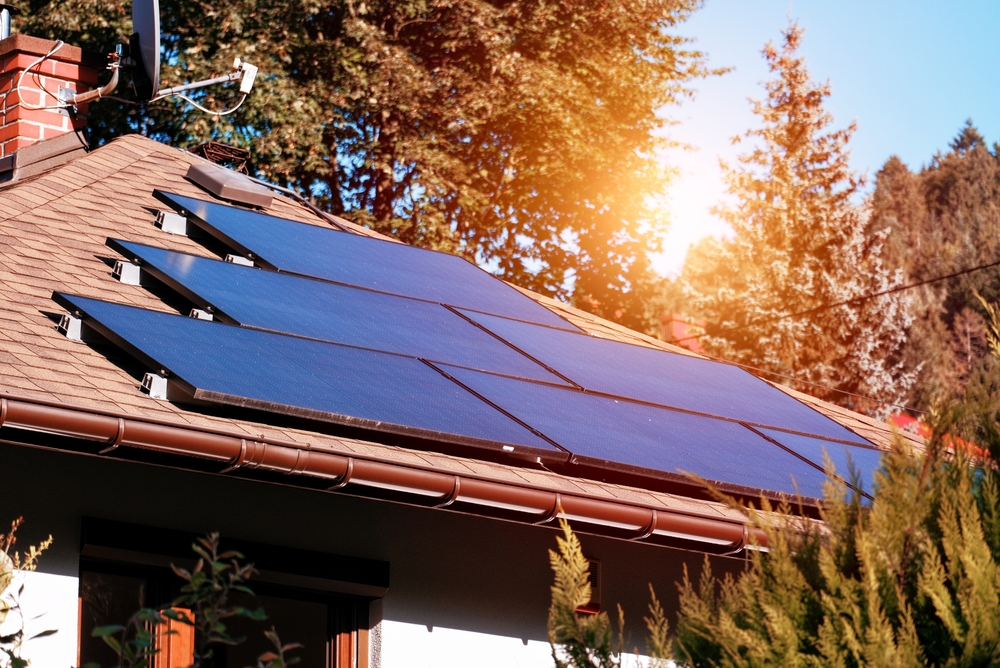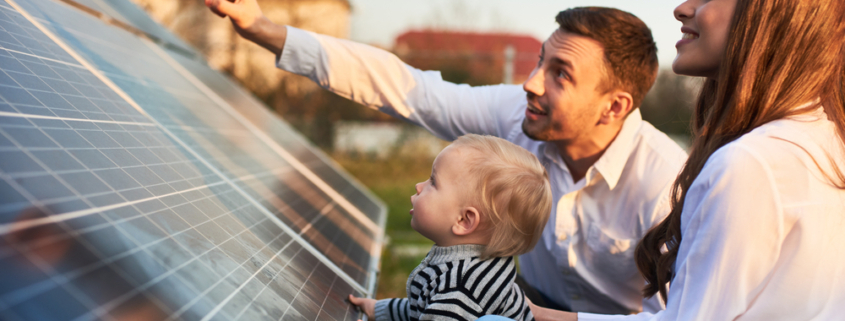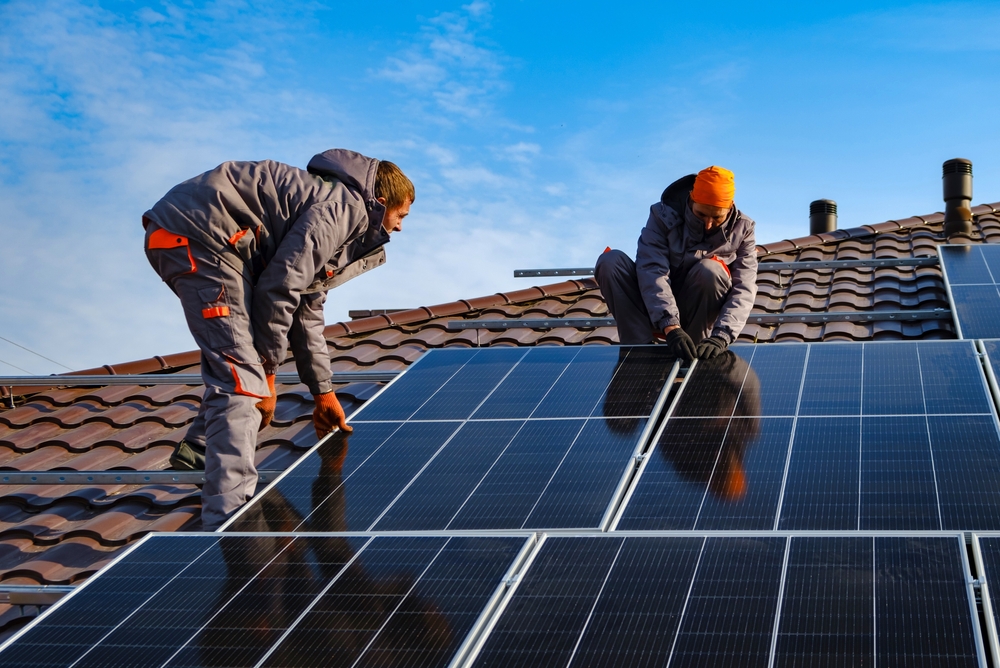How to Maximize Your Solar Panel Life in 10 Easy Steps
Solar panel lifespan refers to the duration a solar panel retains its operational efficiency. This period is typically estimated at 25-30 years, during which there is a gradual decline in electricity production attributed to degradation. Key determinants of this lifespan include:
- Weather conditions
- Maintenance practices
- Technological advancements
Understanding these factors is essential for solar system owners, as it directly influences energy production and return on investment.
The article will serve as a comprehensive guide, discussing strategies to maximize the longevity of solar panels. Starting from understanding the solar panel degradation curve, it will delve into practical tips for weatherproofing your installation, managing temperature effects through ventilation, understanding the role of humidity and voltage potential differences, mitigating light-induced degradation effects, and initial UV exposure’s impact on long-term performance.
Understanding the Solar Panel Degradation Curve
To understand how long solar panels last, it’s important to know about the “solar panel degradation curve.” This curve shows how a solar panel’s efficiency changes over time, specifically how it becomes less effective as it gets older.
-
Different Degradation Rates for Different Panels
Not all solar panels degrade at the same rate. Here are some examples:
- Polycrystalline silicon panels: These degrade at a rate of approximately 0.8% per year.
- Thin-film panels: These degrade faster, at around 1% per year.
As you can see, thin-film panels degrade more quickly compared to polycrystalline silicon panels.
-
The Pattern of Solar Panel Degradation
The degradation curve generally follows a specific pattern:
- Initial drop in efficiency: Right after installation, there is usually a slight decrease in efficiency. This is known as light-induced degradation (LID), where exposure to sunlight initially reduces the panel’s output.
- Slower decline over time: After the initial drop, the efficiency of the solar panel continues to decline but at a slower pace. This decline is influenced by factors such as weather conditions, temperature effects, and maintenance practices.
-
Understanding Efficiency Decline with an Example
Let’s say a solar panel has 100% efficiency when it is first installed. Here’s how its efficiency might change over time:
- After the first year: Efficiency drops to 98% due to LID.
- Over the next few years: Efficiency gradually decreases by around 0.8% each year due to regular degradation factors.
- By year 10: The solar panel could be operating at approximately 91-92% efficiency.
-
Why Managing Degradation Matters
It’s important for solar system owners to manage this degradation if they want their panels to produce as much energy as possible in the long run. While some level of degradation is inevitable due to the materials used and environmental factors, there are ways to minimize it:
- Maintenance: Regularly cleaning and inspecting the panels can help prevent issues that may contribute to faster degradation.
- Temperature control: Installing the panels in a way that allows for proper airflow can help regulate their temperature and reduce the impact of heat on efficiency.
- Optimal operation: Understanding how external factors like shading or dirt accumulation affect panel performance can help optimize their placement and ensure maximum sunlight exposure.
By implementing these strategies, solar panel owners can slow down the degradation process and maintain higher levels of efficiency for a longer period.
-
Solar Panel Lifespan: Beyond the Degradation Curve
It’s worth noting that even though solar panels degrade over time, they don’t suddenly stop producing electricity after reaching their expected lifespan (usually around 25-30 years). In fact, many panels continue to generate power beyond this timeframe, albeit at lower efficiencies.
After 30 years of service, for example, some panels may still be operating at around 80% of their initial output. While this decline in efficiency is significant, it doesn’t mean that the panels are completely useless.
-
Maximizing Solar Panel Lifespan
The goal of maximizing solar panel lifespan is to understand the degradation curve and then take steps to minimize its impact, ensuring that your panels continue to generate sufficient energy for as long as possible.

In the next sections, we will explore practical tips and recommendations to help you achieve this goal.
1. Weatherproofing Your Solar Installation
Weather can significantly impact the operation and longevity of solar panels. Weatherproofing solar panels is essential to safeguard your investment and ensure maximum energy output over time. Different weather conditions pose various risks:
-
Risks Posed by Rain and Snow
Water ingress can cause electrical failures and corrosion. Proper sealing of the panel frames and junction boxes helps prevent moisture penetration.
-
Risks Posed by Hail
Hail can physically damage the surface of panels. Using solar panels certified for impact resistance reduces the risk of such damage.
-
Risks Posed by Strong Winds
High winds can dislodge improperly mounted panels. Secure mounting systems designed to withstand local wind speeds are vital.
To protect against these environmental factors, consider the following practical tips:
- Tilt Angle Adjustment: Positioning panels at an optimal angle not only maximizes energy production but also allows snow and debris to slide off more easily.
- Robust Mounting Systems: Ensure that the mounting system is engineered for your specific geographic area’s wind loads.
- Sealing Techniques: Use high-quality sealants that are designed for outdoor use and can withstand temperature extremes
- UV-resistant Materials: Select panels with UV-resistant coatings to protect against sun damage which can deteriorate panel materials over time.
- Temperature-Tolerant Components: Opt for components that are tested for thermal cycling, ensuring they can handle fluctuations between extreme heat and cold.
2. Managing Temperature Effects with Proper Ventilation
Solar panels are subject to the whims of the weather, and temperature plays a pivotal role in their performance. Excessive heat can be detrimental to solar panel operation, leading to lower efficiency and potential damage. As solar panels absorb sunlight to produce electricity, they inevitably heat up. However, when temperatures rise beyond a certain threshold, typically around 25°C (77°F), power output begins to decrease. This phenomenon is known as the temperature coefficient.
There are several strategies to manage solar panel temperature and prevent overheating:
- Air Circulation: Creating space between the roof and the panel allows air to flow freely and helps dissipate heat.
- Placement: Positioning panels in a location that gets a bit of shade during the hottest part of the day can reduce exposure to scorching temperatures.
- Orientation: Panels facing east or west, instead of south, may produce less electricity but are exposed to less intense heat.
- Reflective Coatings: These coatings can help reduce the amount of heat absorbed by the panels.
- Thermal Regulation with Microinverters: Some microinverters come with built-in thermal management systems that help maintain optimal operating temperatures.
3. The Role of Humidity and Voltage Potential Differences
Humidity can have negative effects on solar panels, especially in areas with high moisture levels. When exposed to continuous humidity, panels may experience problems such as corrosion and reduced electrical insulation, which can lead to reliability issues.
To prevent these problems, it is crucial to incorporate effective moisture barriers during the manufacturing process of solar panels. These barriers act as a shield against moisture, safeguarding the sensitive parts of the panel and ensuring its efficiency and functionality over an extended period.
To minimize these risks and maximize the longevity of solar panels, it is important to consider the following electrical configurations:
- Grounding: Properly grounding the entire system helps maintain voltage balance and prevents imbalances.
- PID-resistant materials: Using components like encapsulants, glass, and backsheets that are specifically designed to reduce voltage-related stresses can mitigate PID.
- Correct system design: Implementing designs that distribute voltages evenly across the array helps counteract PID effects.
- Optimized configurations: By optimizing string configurations and ensuring compatibility among components, it is possible to avoid high voltage differences.
4. Mitigating Light-Induced Degradation (LID) Effects
Light-induced degradation (LID) is a phenomenon that occurs when the electrical properties of solar panel materials are adversely affected by exposure to sunlight. This primarily affects silicon cells, causing a drop in their ability to convert light into electricity. To combat this issue and extend the performance lifespan of solar panels, several measures can be taken:
-
Utilize LID-Resistant Cell Technologies
Manufacturers have developed solar cells that are less susceptible to LID. These advanced materials can significantly maintain higher levels of efficiency even after initial exposure to sunlight. Investing in panels made with such technologies is a proactive approach to mitigating LID.
-
Installation of Adequate Bypass Diodes
Bypass diodes play a crucial role in minimizing power losses due to LID by allowing current to pass around shaded or malfunctioning cells. Ensuring that your solar modules are equipped with quality bypass diodes helps protect against efficiency drops and localized heating, which can exacerbate degradation.
-
Optimal System Design Strategies
- Design solar arrays so that shading on one panel does not impact the performance of others.
- Avoid creating series connections between panels that could be unevenly shaded, as this can lead to overall system inefficiency.
- Consider the installation angle and orientation of each module to minimize shading issues throughout the day and across different seasons.
5. The Role of Initial UV Exposure in Long-term Performance
The durability and efficiency of solar panels depend not only on the quality of materials used and the manufacturing processes involved but also on how they are initially exposed to light. This initial exposure has a significant impact on the lifespan of solar panels.
Why Initial UV Exposure Matters
Research conducted by institutions such as the National Renewable Energy Laboratory (NREL) suggests that solar panels are most vulnerable during their initial days in operation. This period often sets the stage for how well panels will resist degradation mechanisms over time.
The Importance of Early Testing
It’s crucial for solar panels to undergo thorough testing immediately after installation. These tests aim to identify any early-stage defects or weaknesses caused by initial UV exposure, which could lead to premature panel failures if not addressed.
Steps to Protect Solar Panels from UV Damage
To mitigate the negative effects of UV exposure on solar panels, it is important to:
- Ensure that installation teams follow strict protocols when handling and activating new panels.
- Screen for early signs of Light-Induced Degradation (LID) and take corrective actions before the panels start operating fully.

6. Importance of Hiring Certified Solar Installers
Why Certified Installers Matter
Selecting certified solar panel installers is not just a formality; it’s a vital step in ensuring the longevity and efficiency of your solar energy system. Certification implies that the installer has undergone rigorous training and assessment, equipping them with the necessary skills to:
- Identify Optimal Panel Placement: Placement affects exposure to sunlight and thus, energy production. Professionals are adept at assessing your property’s layout to maximize sun exposure throughout the year.
- Implement Correct Wiring Practices: Proper electrical connections are crucial for safety and performance. Certified installers ensure that wiring meets electrical codes and standards, reducing risks associated with incorrect setup.
- Avoid Common Installation Errors: From securing panels to avoiding wind damage to ensuring proper tilt angle for rainwater runoff, trained installers navigate common pitfalls with ease.
Installation Quality Assurance Programs
Quality assurance programs play a pivotal role in maintaining industry standards for solar installation. These programs:
- Set Benchmarks for Best Practices: They provide guidelines covering everything from component selection to final inspection, establishing consistent procedures for quality installations.
- Offer Continuous Education: As technology evolves, so do best practices. These programs ensure that installers stay updated with the latest advancements and installation techniques.
- Foster Consumer Confidence: Knowing that an installation adheres to recognized quality standards provides peace of mind that your investment is sound.
7. Selecting High-Quality Components for Your Solar System
When building a solar PV system, the components you choose are not just parts of a whole; they are the foundation of your system’s longevity and efficiency. Professional expertise and adherence to industry standards play critical roles in this process, ensuring that every piece of the solar puzzle fits perfectly to support the system’s long-term performance.
Tier-1 Solar Panels
- Rigorous Testing: Tier-1 solar panels stand out because they have passed strict testing for performance and durability. Manufacturers of these panels invest significantly in research and development, use advanced robotic processes, and operate under stringent quality control.
- Certified Performance: These panels meet global solar panel quality standards, guaranteeing not only their efficiency but also their resistance to environmental stresses over time.
- Bankability: Financial institutions often prefer or exclusively finance projects using tier-1 panels because of their proven track record, which speaks volumes about their reliability.
Reliable Inverters
The inverter is the heart of your solar energy system, converting DC electricity from your panels into AC power for home use. A high-quality inverter:
- Enhances Efficiency: Maximizes energy conversion efficiency, ensuring you get the most power out of your panels.
- Smart Monitoring: Comes with monitoring capabilities that allow for real-time tracking of system performance and swift identification of any issues.
- Warranty Support: This is backed by substantial warranties, reflecting the manufacturer’s confidence in the product’s lifespan.
Robust Racking Systems
The racking system keeps your solar panels secure against various weather conditions:
- Durable Materials: Look for racking made from corrosion-resistant materials suitable for your specific climate.
- Wind Load Specifications: Ensure that the chosen racking can withstand local wind speeds and is designed according to regional load requirements.
- Seamless Integration: It should integrate seamlessly with both the solar panels and roofing materials to prevent leaks or structural damage.
By selecting tier-1 solar panels, reliable inverters, and robust racking systems based on expert recommendations from certified installers and adherence to installation quality assurance programs, you set up your solar PV system not just for immediate success but for enduring excellence.
8. Regular Maintenance and Cleaning Tips for Enhanced Performance
Regular upkeep of your solar panels is crucial to their efficiency and longevity. By adhering to a maintenance schedule and conducting routine inspections, you can identify and fix potential issues before they escalate, ensuring your system operates at peak performance.
Here is an essential solar panel inspection checklist to help maintain your system’s health:
- Visual Inspection: Check for any visible damage such as cracks on the panels, fraying wires, or loose connections.
- Mounting and Racking: Ensure all mounting points are secure. Look for signs of corrosion or rust that could weaken the structure.
- Inverter Functionality: Confirm that the inverter display is showing the correct information and that there are no error messages.
- Wiring Connections: Examine all wiring for signs of wear or damage, including insulation breaks.
- Energy Production: Compare current energy output with previous readings to detect any significant drops in performance.
- Shading Analysis: Assess nearby trees or new constructions that might now cast shadows on your panels during peak sun hours.
To keep your solar panels performing optimally, a specific maintenance schedule is recommended:
- Annual Check-Up: Have a professional perform a detailed annual inspection as part of regular solar panel maintenance.
- Biannual Cleaning: Clean the panels twice a year to remove dirt, leaves, and other debris. In dusty areas or places with heavy bird activity, cleaning may be needed more frequently.
- After Extreme Weather Events: Inspect and clean panels following severe weather conditions like heavy snowfall or storms.
9. Adopting Safe and Effective Solar Panel Cleaning Methods
Regular maintenance and cleaning are crucial for keeping solar panels working efficiently. Dust, dirt, bird droppings, and other substances can block sunlight from reaching the panels, which reduces their energy output. That’s why it’s important to have a proper cleaning routine in place as part of your solar panel maintenance plan.
The Right Way to Clean Solar Panels
Here are some recommended methods for cleaning your solar panels:
- Use Non-Abrasive Materials: Soft brushes or squeegees with plastic blades are ideal for loosening dirt without scratching the panel’s surface.
- Avoid Harsh Chemicals: Mild soap and water are sufficient for most cleaning tasks. Harsh chemicals can damage the protective coatings on the panels and should be avoided.
- Utilize Deionized Water: For rinsing, deionized water helps prevent mineral deposits from forming on the panels after drying.
Practical Tips for Safe Access and Cleaning
Follow these tips to ensure safe access and effective cleaning of your solar panels:
- Inspection Before Cleaning: Use the solar panel inspection checklist to assess if there are any issues that need attention before starting the cleaning process.
- Schedule Cleaning Sessions: Integrate cleaning into the maintenance schedule, considering factors like local climate and environment to determine optimal cleaning frequency.
- PPE for Safety: When accessing rooftop installations, ensure proper use of personal protective equipment such as gloves, non-slip shoes, and safety harnesses to prevent accidents.
Recommended Tools for Solar Panel Cleaning
Having the right tools can make the cleaning process easier and more efficient. Here are some tools that can help with solar panel cleaning:
- Extendable Poles: For ground-based cleaning, poles can help you reach panels without needing to climb onto the roof.
- Hose with a Soft Spray Nozzle: A hose can gently rinse off soap and debris without damaging the panels.
Dos and Don’ts of Solar Panel Cleaning
To ensure effective and safe cleaning of your solar panels, keep these dos and don’ts in mind:
| Do | Don’t |
| Check weather conditions; it’s best to clean during overcast days or early mornings to avoid rapid evaporation that could leave residues. | Spray cold water on hot panels as this might cause cracking due to thermal shock. |
| Ensure that all electrical components are covered and kept dry during cleaning to prevent electrical hazards. | Use abrasive pads or powders that can scratch the glass and reduce performance. |
10. The Significance of Inverter Warranties in Overall System Protection
When discussing the durability of solar energy systems, inverter warranties are crucial for complete system protection. Inverters have a vital role in converting the direct current (DC) produced by solar panels into the alternating current (AC) used in homes and businesses. Because of their function, it is essential for inverters to be reliable for the solar system to perform at its best.
While solar panel warranties and manufacturer guarantees are often given more attention, understanding the details of inverter warranty coverage is equally important. Here’s what these warranties usually include:
- Duration: Inverter warranties typically last from 5 to 15 years, with options to extend.
- Scope: Coverage often involves defects in materials and workmanship.
- Service: Many manufacturers offer replacement units or repair services if an issue arises.
The warranty provided by inverter manufacturers has a significant impact on the long-term financial performance of a solar installation. Since inverters are more likely to fail before solar panels do, a strong warranty can help reduce expenses if repairs or replacements are necessary.
Here are key reasons why inverter warranties are important:
- Financial Security: A comprehensive warranty can protect against unexpected costs related to inverter failure.
- System Uptime: Effective warranty service ensures minimal downtime, keeping energy production and savings intact.
- Investment Value: Long-term coverage improves the attractiveness of your solar investment.




